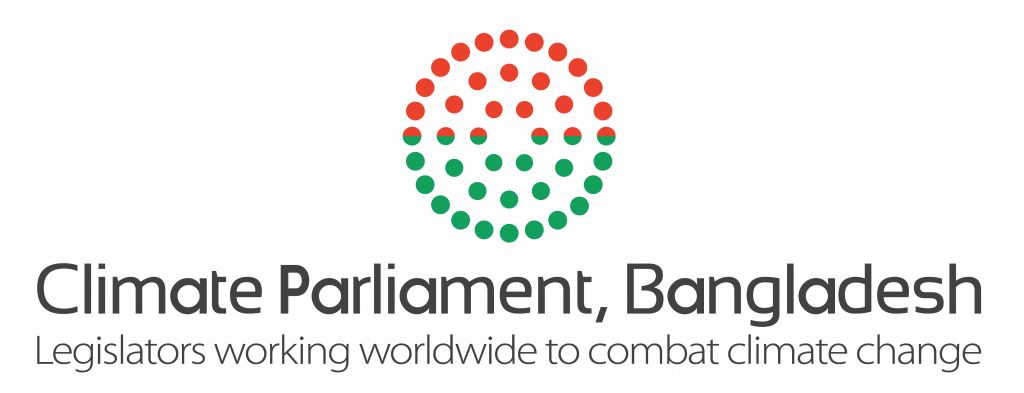What we do
Key Focus Area
Climate Parliament work focuses on renewable energy sector mainly. Despite this, they focus on action ideas from different nations (70 countries). Such as Climate threats, Large-scale renewables, Green grids, Sustainable transport, rural electrification, Energy efficiency. Climate Parliament has three different working areas.

Youth-led Activities
As a youth-led social welfare organization, The Earth Society has different initiatives and conducts activities engaging youths from various institutions and similar-minded organizations from across the country.

Policy Advocacy
The Earth Society organizes programmes and events engaging youths with legislator bodies. Through sessions, discussions, workshops etc.

Research & Publications
After the completion of each project and research work, The Earth Society makes publications of the reviews of the accumulated knowledge, results and findings to disseminate them to the broader public and for future references.

Climate Parliament Alliances & Partners
Climate Parliament Alliances & Partners will help us through the whole journey. They encourage their engagement in such initiatives and they will help us in the progression of our goal.

Renewable Energy
Energy has always been a vital resource in the development of any nation. It helps countries GDP. GNP but on the other hand, hectic industrial activity in the past century has come face to face with serious problems arising out of haphazard utilization of the energy resources. Now we have to think about renewable energy in the industrial sector as well as garments sectors. Bangladesh government proposed in the Mujib Climate Prosperity Plan to the construction of strategic Mujib Energy Hubs, which will ensure the reconversion of sources of "dirty energy" such as coal, oil and diesel thermal power plants to high-tech green hydrogen production facilities-thus reinforcing power grid stability, providing cleaner burning fuels, ensuring the up-skilling of workers, and allowing the energy sector to capitalize on high-value strategic export products in the form of green hydrogen.

Environment
Environment is just like our mother. The life of humans and animals is entirely the dependent on the environment. It nourishes us. But now we are destroying our environment by doing such activities which are harmful to the environment. Starting from simple plastic dumping here and there to burning fossil fuels, we human disrupt every normal cycle of the environment. To make our environment better for the next generation we have to work in a sustainable way. If we highlighted our problem, then we could easily come to a solution. We want to work on recycling policies so that we can create a less plastic environment.

Water Management
Water is the most widely distributed substance on our planet. Water resources occupy a special place among other natural resources. It is available everywhere and plays a vital role in both the environment and human life. Human life itself is impossible without it because it can be substituted by nothing else. But we humans pollute the water in many ways. So, water loses its quality. Our rivers are dying for anthropogenic causes and the marine ecosystem is also disrupted. Everything is related to one another. We lose many marine lives in the ocean, seas or rivers. The magnificent properties of natural waters their renovation during the water cycle and their ability for self-purification becoming weaker because of us. Around the world drinkable water is starting to run low and the water stored is being contaminated by pollutants causing sickness and death. So, we have to talk about all these problems together and fight against them.
Our aim is to work on renewable energy and establish a network of legislators from across the globe to address climate change issues. With the help of climate enthusiast people, we can create clean air for everyone where carbon emission is discouraged by the political body. Political willpower will encourage the use of renewable energy that’s what we believe.
Climate Factor
On Climate Change, the Earth’s temperature is likely to increase by 2 to 4.5 degrees Celsius by the end of the century. According to the Intergovernmental Panel on Climate Change (IPCC) 52nd session, global surface temperature has increased faster since 1970 than in any other 50-year period over at least the last 2000 years. Temperatures during the most recent decade (2011–2020) exceed those of the most recent multi-century warm period. IPCC findings also states that a 45 cm sea-level rise will inundate almost 10.9% of the territory of Bangladesh and will displace 5.5 million population of coastal regions.

This graph includes information from various countries about carbon emissions. The CO2 emission for Bangladesh has been steadily increasing. Bangladesh’s emissions per capita is 0.1 metric tons, it is much lower than the United States results. Bangladesh is considered a third-world country, while the US is a developed nation. It makes sense that Bangladesh’s emissions are much lower. Since, Bangladesh is so densely populated, if the country was more developed, it would be higher on the list. Compared to the other countries in the “Total Fossil Fuel Emissions by Country” graph, Bangladesh’s emissions are much lower than the other countries. There is no giant change, like China.
However, the way we start emitting carbon there are already a huge amount of carbon trapped in the atmosphere. We are adding more amount on it and making the numbers bigger. We must switch on renewable energy now.
Climate Impacts
Globally, Bangladesh known as one of the most vulnerable countries to climate change. The most damaging effects of climate change experienced in floods, salinity intrusion, and droughts. The impacts of climate change will be more focused in some regions. These regions have higher concentrations of poverty also. In Bangladesh, 40% of productive land is projected to be lost in the southern region of Bangladesh for a 65cm sea level rise by the 2080s. Flood areas could increase by as much as 29% for an increase of 2.5°C in Bangladesh. With the rise of sea-level up to one meter only, Bangladesh could lose up to 15% of its landarea under the sea water and around 30 million people living in the coastal areas of Bangladesh could become refugees because of Climate Change impacts. In other words, the Physical, Social as well as Economic conditions of Bangladesh are very typical to any of the most vulnerable countries in the world. Moreover, the adverse effects of Climate Change – especially High Temperature, Sea-level Rise, Cyclones and Storm Surges, Salinity Intrusion, Heavy Monsoon Downpours etc. has aggravated the overall Economic Development scenario of the country to a great extent.
Floods
Almost 80% of the total area of the country is prone to flooding.

Cyclones and Storm Surges
South and South-eastern Parts of the
country were hit by Tropical Cyclones during the last few years.

Salinity Intrusion
Almost the whole Coastal Belt along the Bay of
Bengal is experiencing Salinity problem.

Extreme Temperature and Drought
North and North-western regions of the country are suffering because of the Extreme Temperature problem.

Sea Level Rise
With the rise of Sea-level up to one meter only,
Bangladesh could lose up to 15% of its land area under the Sea water.

Migration
About 30 million people living in the coastal areas of Bangladesh could become Refugees because of Climate Change
impacts.

Government Initiatives
Mujib
Climate
Prosperity
Plan
Bangladesh’s Prime Minister Sheikh Hasina took over for her second period as Climate Vulnerable Forum (CVF) President, she initiated a discussion amongst the group to try to shift the narrative once again from resilience to prosperity. Resilience focuses on managing the adverse risks of climate change, while prosperity implies overcoming those risks and becoming prosperous despite those prevailing risks. The Prime Minister has shared Bangladesh’s draft for the first such plan, which she named after the Father of the Nation Bangabandhu Sheikh Mujibur Rahman, as the Mujib Climate Prosperity Plan (MCPP). MCPP’s aim is to stress that it does not replace any of our existing plans such as the 8th Five Year Plan, the Perspective Plan to 2041 or the Delta Plan to 2100, but rather aims to supplement those existing plans and accelerate their implementation. The second important point to make is that it aims to achieve transformative change by enabling
Bangladesh to leapfrog on a number of technological and economic fronts. This will be done on a five-plus-five-year format, where the first five years will be to lay the foundations for doing something new and different, and the second five years will be to actually put in the investments and deliver them. MCPP refers to the construction of strategic Mujib Energy Hubs, which will ensure the reconversion of sources of “dirty energy” such as coal, oil and diesel thermal power
plants to high-tech green hydrogen production facilities.
Green
Climate
Fund
Power
Mix
The GCF is a fund established within the framework of the United Nations Framework Convention on Climate Change as an operating entity of the financial mechanism to assist developing countries in adaptation and mitigation practices to counter climate change. Through this funding, the government of Bangladesh plans to provide assistance to 25,000 women and girls to adopt resilient livelihoods, while ensuring reliable, safe drinking water for 130,000 people through community-managed rainwater harvesting solutions and so on.
Power
Mix
Demand for electricity in Bangladesh is projected to reach 40,000 megawatts (MW) by 2030. The Government of Bangladesh has plans to increase power generation beyond expected demand to help propel growth in the export-oriented economy and meet the needs of a growing middle class by raising $70 billion in total investments in the sector over the next 15 years. Electricity generation capacity has increased significantly over the last decade. Electrical generation capacity has increased from about 5 gigawatts in 2009 to around 21 gigawatts in 2019, and access to energy has expanded to nearly 95% of the population. The fuel mix of Bangladesh’s power plants is heavily based on natural gas. The Government of Bangladesh plans to reduce dependence on domestic natural gas and increase the use of imported liquefied natural gas (LNG). As of July 2020, the Ministry of Power, Energy, and Mineral Resources Plans was reportedly reconsidering plans to shift Bangladesh’s fuel mix towards coal included by generating as much as 50 percent of total electricity using coal-based power plants by 2030. The government is also considering importing electricity from neighboring countries and expanding the use of renewable resources, including solar and wind power.
Bangladesh
Delta
Plan
2100
The government of Bangladesh has approved the Delta Plan 2100 on September 4, 2018, to secure the future of water resources and mitigate the likely effects of climate change and natural disasters. It is a long-term integrated techno-economic mega plan that integrates all delta-related sector plans and policies, enveloping a Delta Vision and strategies that make it possible to integrate sector plans and policies for the long term and to present actionable interventions with a roadmap for realization.

